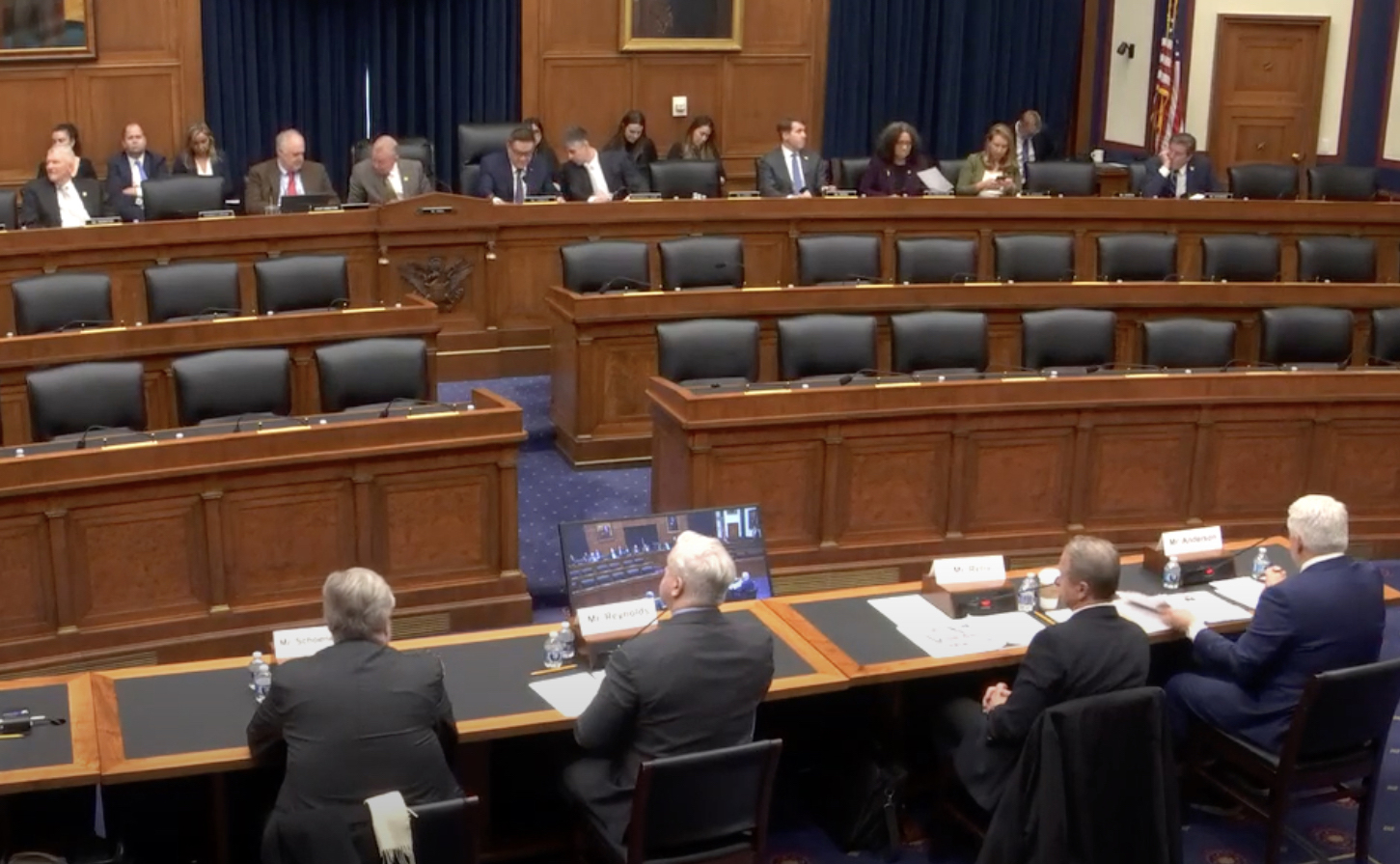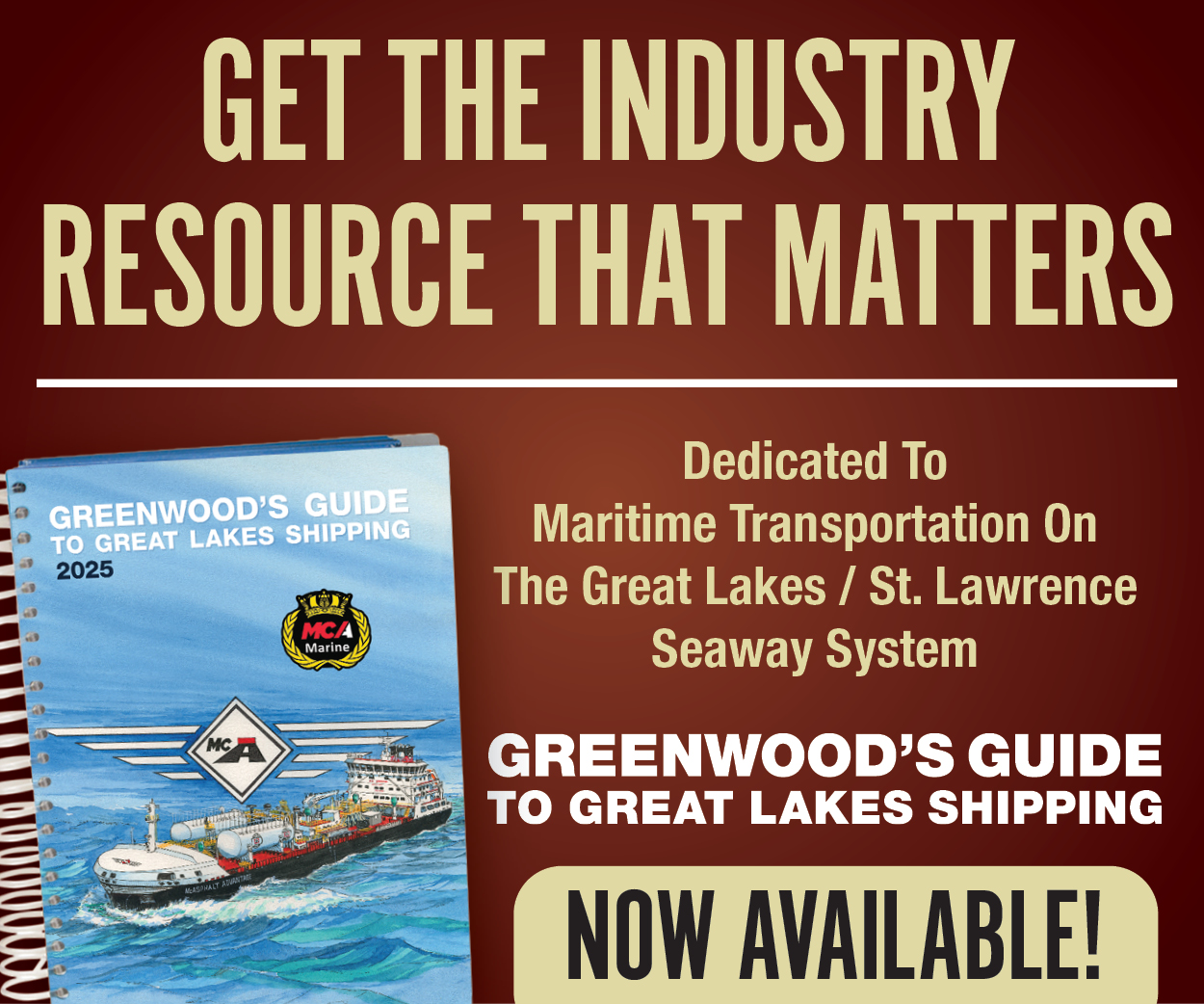On February 5, the Coast Guard and Maritime Transportation Subcommittee of the U.S. House Transportation and Infrastructure Committee held its first hearing in the 119th Congress. The hearing continued the “America Builds” series, an ongoing focus on maritime infrastructure and the nation’s marine transportation system.
Rep. Mike Ezell (R-Miss.), the new subcommittee chair, said in a prepared statement that ships transport nearly all inbound and outbound cargo in the United States. Ports and marine terminals, he added, are critical components for that transport.
Ezell also noted that the Jones Act is a “fundamental statute for the domestic maritime industry.” He referred to it as “quite literally the bedrock and foundation of our nation’s shipbuilding industrial base.”
The subcommittee invited four maritime officials to testify at the hearing: Paul Anderson, president and CEO of Port Tampa Bay; Joe Rella, president of St. Johns Ship Building Inc., who spoke on behalf of Shipbuilders Council of America; Tom Reynolds, chief strategy officer of Seasats, who spoke on behalf of the Association for Uncrewed Vehicle Systems International; and Brian Schoeneman, political and legislative director of the Seafarers International Union of North America.
After opening remarks from the chairman and ranking member Rep. Rick Larsen (D-Wash.), the witnesses presented prepared remarks addressing a number of topics.
Anderson noted the importance of the regular, biennial schedule for Water Resources Development Acts, calling WRDA projects and funding critical for port investments. Rella called on Congress to support the SHIPS for America Act, introduced in December 2024 by the previous Congress. Reynolds noted that America’s competitors are working on autonomous vessels “faster than we are” and asked for Congress to revisit how autonomous vessels are regulated. Finally, Schoeneman said that, to help resolve the shortage of marine workers, the United States needs to make the maritime industry a national priority.
Funding
Money was a major topic of discussion at the hearing, especially as it relates to Trump’s executive order (now rescinded) to freeze federal grants and loans. Larsen, in his opening remarks, stressed the need to maintain funding for maritime infrastructure. He called out Trump’s proposed spending freeze, a move he said would threaten critical work. Larsen said there is “chaos regarding security issues.”
“To keep progress going,” he added, “we need to keep our investments going.”
Larsen repeatedly raised another issue during the hearing: competition at foreign ports as allies and adversaries invest huge sums to build port infrastructure and shipbuilding capacity. China subsidizes its ports, Larsen said, but not the United States. He said the Port Infrastructure Development Program must continue, along with the EPA’s Clean Ports Program.
“States are benefiting,” he said. “Let’s keep it going.”
Anderson said federal grants to ports “are critical to compete on the world stage.” He said industry representatives were alarmed by the Trump administration’s proposed freeze of federal grant funding. Anderson added that debate is still in its early stages.
“We need to work this out,” he said. “Pragmatism will win the day.”
Schoeneman said that union members, too, are concerned about the funding imbroglio, particularly about the effect of a freeze on foreign aid shipments. Seafarers could face layoffs if funding stops, he said. Even worse, sailors and ships could get stuck in distant ports. He said that aid programs are critical to farmers and maritime carriers alike.
Role Of Congress
One common question among subcommittee members on both sides of the aisle was what Congress can do to best help the maritime industry. The panelists touched on a number of issues.
Keeping WRDA on its traditional two-year reauthorization schedule was cited as a top priority. The panelists also supported continued funding via the Bipartisan Infrastructure Law, as well as agency programs from the Maritime Administration and EPA.
And there were other suggestions. Regulatory reform is a concern. At Port Tampa Bay, for example, Anderson described how aids to navigation (ATONs) were damaged during recent hurricanes. Unfortunately, repair of that equipment and systems remains incomplete, he said. Anderson added that, while the Coast Guard is focused on repairs, the agency’s rigid work processes impede efficiency and speed. The ATON damage has slowed port operations, Anderson said, requiring cutbacks and delays in vessel sailings, especially at night. If the problem was fixed, he said, “We could get back to normal operations.” Anderson argued that private contractors could have already completed the ATON repairs, suggested allowing public-private partnerships after natural disasters.
Reynolds also referenced the need to update or modernize certain Coast Guard rules and regulations. He noted that the Coast Guard does not use autonomous vessels and, therefore, the process to review and evaluate that technology is too slow. As a result, AV operational advancements languish. Reynolds commented that it’s “unfair that the Coast Guard can regulate this since they don’t work in this space. We need to update the rules of the road.”
Subcommittee members asked about crane purchases and cyber infiltration, since most port cranes are purchased from China. Again, Anderson cited regulatory issues, at least in Florida, where public purchases have to follow low-bid requirements. He said Port Tampa Bay has recently been able to purchase a crane from Germany because it could demonstrate the security benefits. Procedurally, though, this was difficult and took more time. He said that American ports need to support American manufacturers and that Congress should to help with domestic purchasing, both regarding authority and with money to offset the higher cost of domestic cranes or cranes from allied countries.
Rella, speaking on behalf of the Shipbuilders Council of America, also referenced regulatory reform by commenting that a foreign shipyard and an American shipyard do not represent “level playing fields.” American workplaces deal with more extensive and detailed work safety requirements. In addition, permitting is tougher. All of this is done “for the right reasons,” Rella said, but foreign competitors don’t face the same challenges. He suggested that future government contracts might reconsider various regulations, not to make contracting less rigorous but to reevaluate implementation and cost impacts.
Rella added additional comments regarding the SHIPS for America Act, saying the act would establish a national maritime strategy that would grow the entire maritime base, from shipyards to workforce training. The act could set demands for certain numbers and types of new vessels, Rella said, and could provide momentum to reinvigorate the maritime sector, energizing it in the same way that competitor governments support their own shipyards.
Workforce Concerns
Mariner workforce training drew considerable attention during the subcommittee meeting. Schoeneman said, if the United States made the maritime sector more of a national priority, then that would help draw people to maritime trades.
“We have the tools,” he said. “We need to use them.”
Shoeneman added that young people today have different career interests and expectations than 40 or 50 years ago. Younger people ask about WiFi availability. Kids today, he said, see trucks and airplanes, and they know they can become truck drivers or pilots or mechanics. Maritime doesn’t present that same visibility, he said, except near ports. Future workers, Shoeneman argued, need to know that maritime jobs pay well, provide good benefits and offer a good career pathway.
The United States has good maritime schools, Shoeneman said, but they are underfunded. As an example, he said that students at one maritime school recently had to chip in to pay for the fuel for a summertime training excursion.
The hearing ended after all members had a chance to comment and ask questions. Ezell did not indicate about follow up on any issues. Additional information about the hearing is available on the subcommittee’s website, transportation.house.gov/subcommittees/subcommittee/?ID=107418.
Featured image caption: A panel of maritime industry representatives speaks February 5 to a subcommittee of the House Transportation & Infrastructure Committee. Photo is a screenshot from the House Transportation & Infrastructure Committee YouTube channel.




